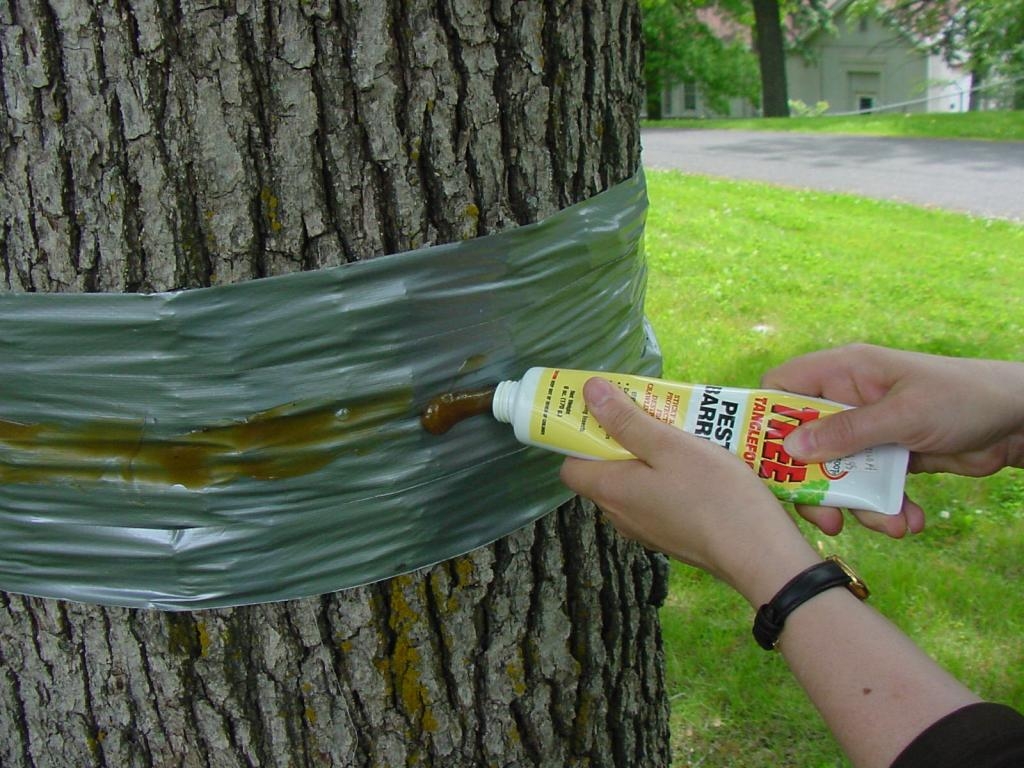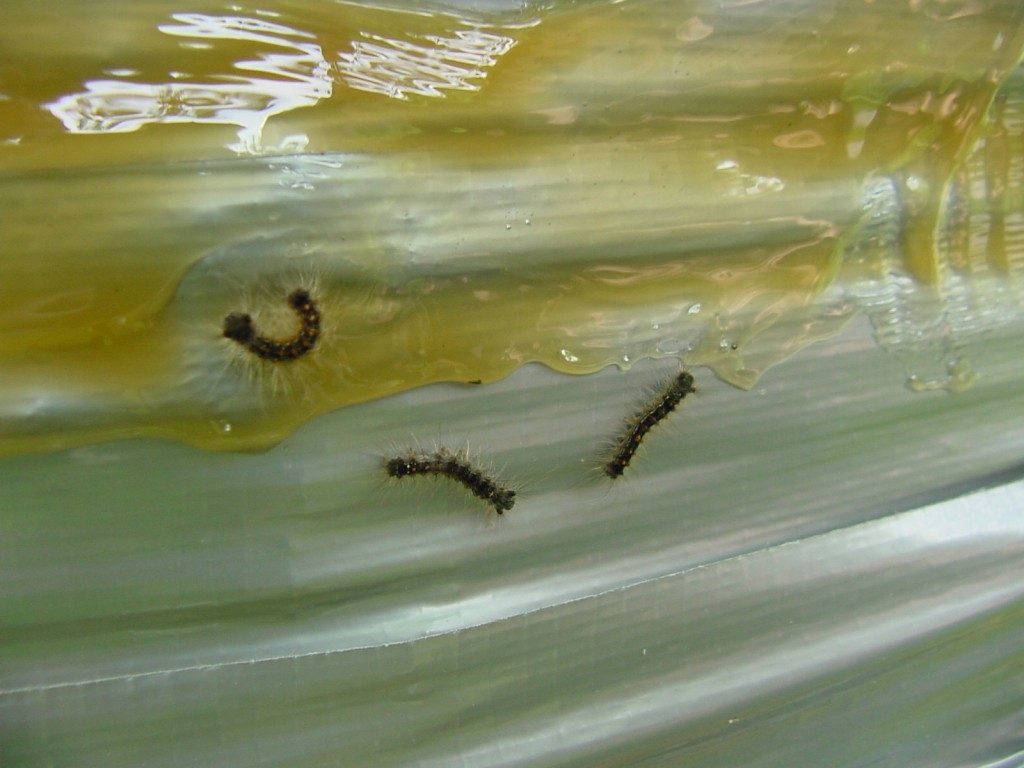Reduce the number of spongy moth (Lymantria dispar) caterpillars in your trees by putting up sticky barrier bands before the caterpillars start to hatch in mid-May. Small caterpillars crawling up the trees can become trapped in the sticky material and die. Bands can keep small caterpillars from initially reaching tree canopies, migrating to other trees, or from climbing back up if they fall off the tree (which can be surprisingly common!).
Make sticky barrier bands using duct tape or other nonporous material that can be wrapped around a tree trunk and coated with a commercially available sticky material such as TangleFoot® or Vaseline®. On thin-barked trees, tie butcher paper or paper bags around the trunk before using the duct tape. When the bark is dry, wrap duct tape around the tree, shiny side out, pressing the tape firmly into the bark cracks to prevent caterpillars from slipping under the bands. The tape should be wrapped a few inches wide and placed around the tree trunk at chest height – about four feet above the ground. Note: if a tree has very deep furrows in the bark, small spongy moth caterpillars may still be able to pass beneath and avoid the sticky band.

The band of duct tape is needed to protect the tree bark from the sticky material, which could disfigure or harm the tree if applied directly to bark. Smear the sticky material along the center of the band. If you choose to use petroleum jelly, allow at least two inches of uncoated band under the jelly as it can melt and flow downward. Periodically check the barrier bands to make sure they have not been clogged with insects, dirt or debris. Apply more sticky material as needed; check especially after a rain.
The sticky barrier traps are most effective against small spongy moth caterpillars. For larger caterpillars, burlap band traps are recommended.
Recently, similar sticky-band trapping methods (for the invasive spotted lanternfly) have caused concerns for birds in Pennsylvania and other mid-Atlantic states. To help reduce risks to birds, consider placing chickenwire or mesh screening over the sticky bands to prevent birds from contacting the sticky surface. See this page for additional info about preventing bird contact.




